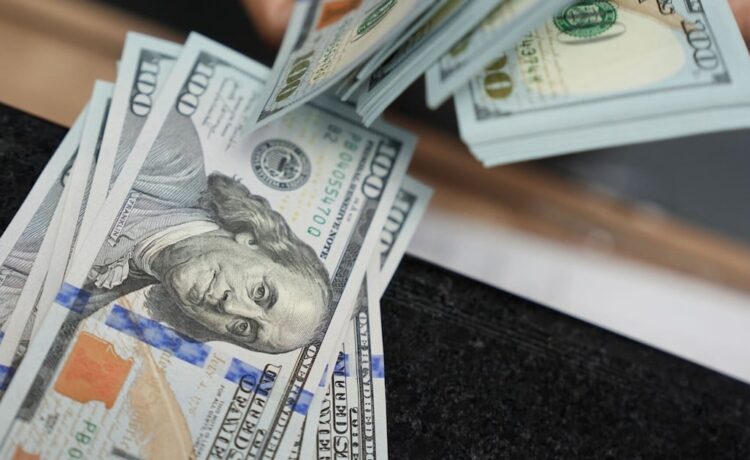(Bloomberg) — The dollar wrapped up its worst week in 14 months as currency traders grapple with lots of tariff talk, with no real action, from President Donald Trump.
The Bloomberg Dollar Spot Index closed 1.6% lower from last Friday — the steepest one-week drop since November 2023, when the Federal Reserve reached the end of a monetary policy tightening cycle. The world’s reserve currency extended losses late Thursday after Trump appeared to soften his stance on tariffs against China.
Trump’s threats against major US trading partners including Canada and Mexico have roiled markets, but so far actual executive orders to immediately levy specific tariffs have yet to be signed. He has ordered the Treasury and Commerce departments to study current trade relations and report findings by April 1.
To Matthew Hornbach, Morgan Stanley’s head of macro strategy, investors had been hesitant to sell dollars in the leadup to the inauguration in case Trump chose to immediately implement tariffs. Now, though, they have more freedom to act.
”The further we get into President Trump’s second term in office, I think the more comfortable investors are going to become expressing the views that they hold, which is: the dollar is rich, interest rates are high and both are ripe for a correction,” he said Friday on Bloomberg Television. He expects an exodus of dollar bulls to benefit the Japanese yen, euro and British pound.
The pound led Group-of-10 gains versus the greenback on the week, rising more than 2.5% and finding support after stronger-than-expected UK manufacturing and services figures released Friday. The euro is also on track for its best week since 2023, with much of Trump’s trade commentary since taking office targeted at North American neighbors Canada and Mexico rather than the common currency bloc.
At Goldman Sachs, currency strategists Friday estimated that traders had unwound some two-thirds of the tariff risk premium they had priced into the euro-dollar pair, even as the bank’s analysts continue to expect US economic outperformance and trade measures to support the greenback in the months ahead.
“The moves this week are a reminder that a key risk to our view is a repeat of 2017-style policy outcomes, when actual trade policy was largely unchanged — despite a lot of sound and fury — and the dollar more than reversed its post-election gains,” a Goldman team led by Kamakshya Trivedi wrote in a note.
Morgan Stanley’s strategists have been warning that traders are increasingly looking for the right moment to sell the dollar. The firm’s forecast for the greenback is one of the most bearish among strategists surveyed by Bloomberg.
Both bullish wagers on the dollar and the currency’s value itself have climbed in the months since Trump’s election victory in November. The dollar gauge is up more than 3% since Nov. 5, while derivative traders held the equivalent of roughly $33.7 billion in long dollar positions, according to data from the Commodity Futures Trading Commission as of Jan. 21 — near the most since 2019.
This week’s retreat in the dollar might instead represent a paring of stretched long dollar positions and consequently be short-lived, MUFG currency analysts including Derek Halpenny and Lee Hardman wrote in a note.
“We remain convinced that tariffs will be used actively by Trump and by the end of next week the financial market interpretation of tariffs could well be notably different,” the MUFG strategists said.
–With assistance from Anya Andrianova and Sydney Maki.
(Adds Goldman comment, latest CFTC data, updates market moves throughout.)
©2025 Bloomberg L.P.



